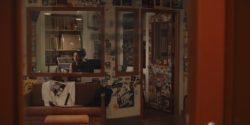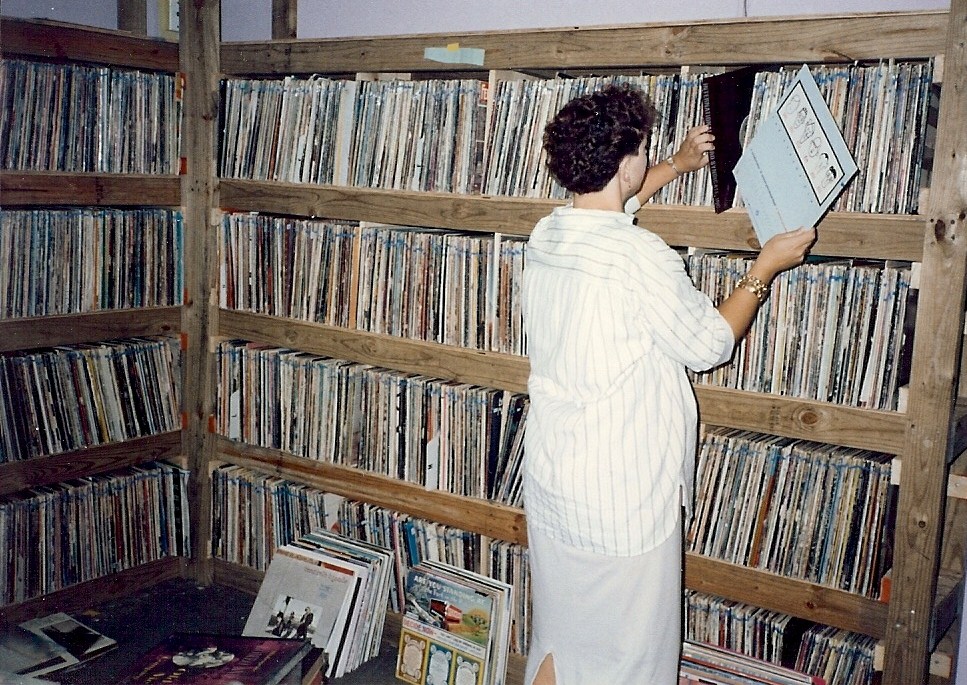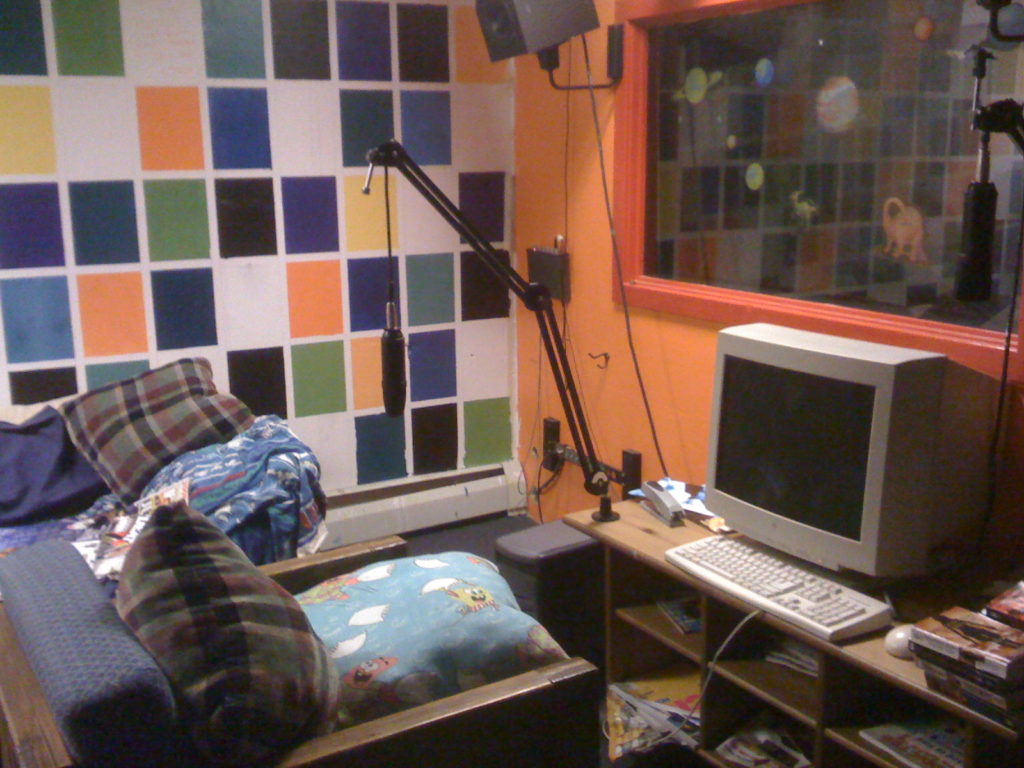Student DJ Anne Harris is on the microphone in the booth at WWXU Haverford College Radio. While back announcing a track by Mannequin Pussy, she looks through a sticker-covered window into the record library, where local band Androgynous is preparing to play live. Posters, stickers and flyers are plastered on the walls and there are shelves and shelves of vinyl records. Audio equipment surrounds her, including turntables and even a vintage reel-to-reel machine. Musicians Siobhan and Nathan set up their gear while their drowsy bandmate Becca reclines on a musty old couch and drummer Geoff opens a tin of edibles. The sleepy musician suddenly vomits, quickly ending any plans to perform in the cozy basement radio station.
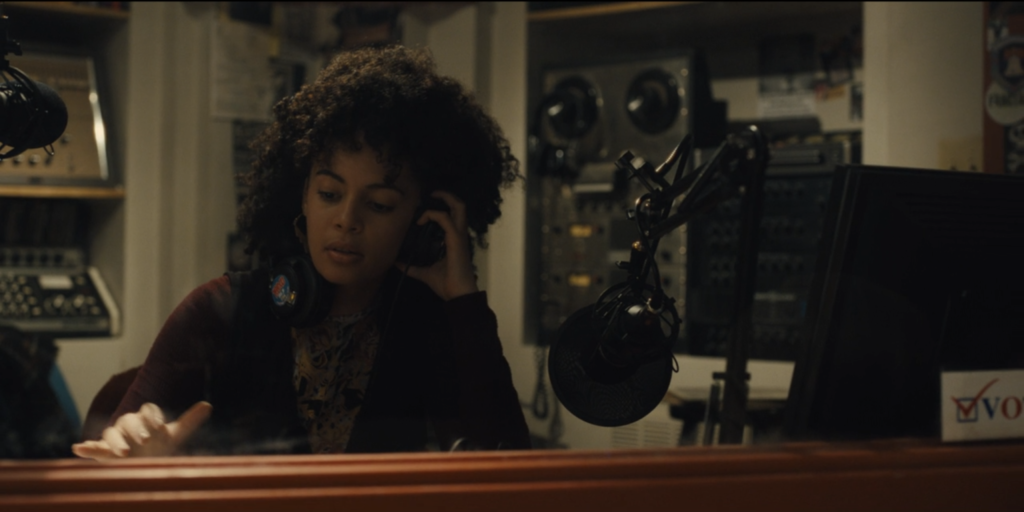
Although the location and scenario likely rings true for so many college radio participants, this scene was filmed on a sound stage for the HBO Max limited television series Mare of Easttown. Set in Pennsylvania, the show puts a fictionalized version of the the Philadelphia Main Line-located Haverford College radio station circa 2019 in the spotlight during a few brief segments in a couple of episodes.
The production team chose the call letters WWXU and upgraded it to an FM station, much to the delight of this former Haverford College radio DJ and Music Director. During my era in the 1980s, the station’s call letters were WHRC and we broadcast over AM carrier current from a dining center basement studio to students during mealtime as well as to select dorms.
I’m always excited to see college radio in television and film and it appears infrequently these days. So I was completely shocked to see my own college station showing up on a buzzed-about TV show. There were familiar details, like the wooden shelves of LPs that looked nearly identical to the record library in my days at the station. Fellow WHRC and Haverford alumni were equally amazed. At least one person was sure that the station scenes were filmed at Haverford.
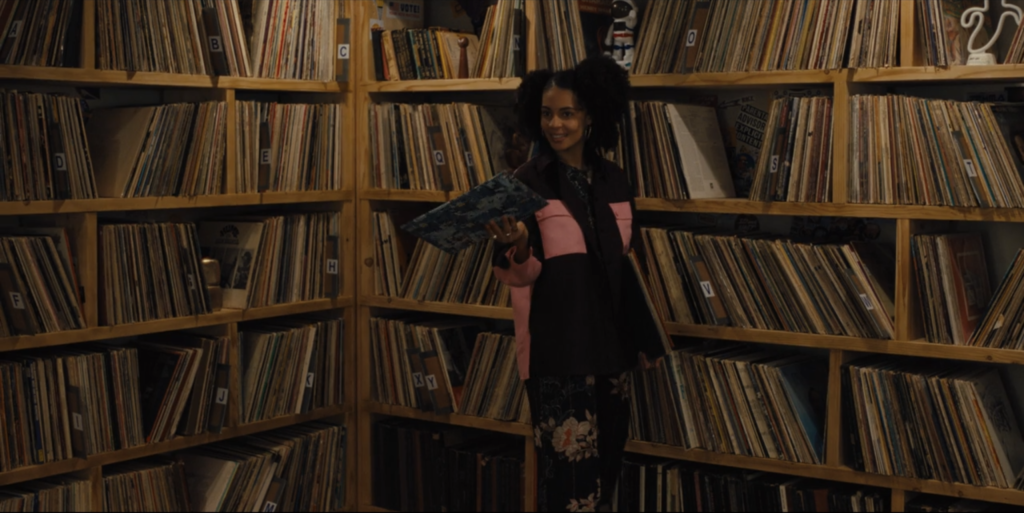
Not content to merely speculate, I reached out to HBO to get the back story. Many thanks to Mare of Easttown production designer Keith Cunningham for taking the time to fill me in on how this very convincing replica of a college radio station came to be. Filming began in fall 2019 and was paused during the height of the COVID-19 pandemic, before resuming in the last few months of 2020. Some concepts had to be reworked and these moments where we are introduced to both Anne and the band Androgynous (AV Club has a great piece about the making of this fictional band) at the Haverford College radio station actually “turned out to be a better idea” and safer to film than the original imaginings of Androgynous playing at a rave-like crowded party, according to Cunningham. Although filming wasn’t originally planned at Haverford College, a shoot on the nearby Bryn Mawr College campus (part of a Bi-College community with Haverford and coincidentally where DJ Anne Harris mentions seeing Androgynous play for the first time) was slated to happen and was cancelled just as the COVID-19 shutdowns were beginning.
Much care was put into the design of the fictional WWXU 101.9 FM at Haverford College, including research about the school’s actual college radio station. I was dying to know if Mare of Easttown‘s production team had looked at my WHRC photos, especially since the record library resembles the one depicted in a 1980s photograph that my dad took of me at Haverford. Additionally, the orange-colored framing of the show’s radio booth and the wooden couch are reminiscent of the 2009-era WHRC in photos that I shot during an Alumni Weekend visit. When I asked about those similarities, Cunningham confirmed my speculation, revealing that, “A lot of our show is about having this sort of generational history…and just feeling the bones of the past…so we used the Haverford pictures.”
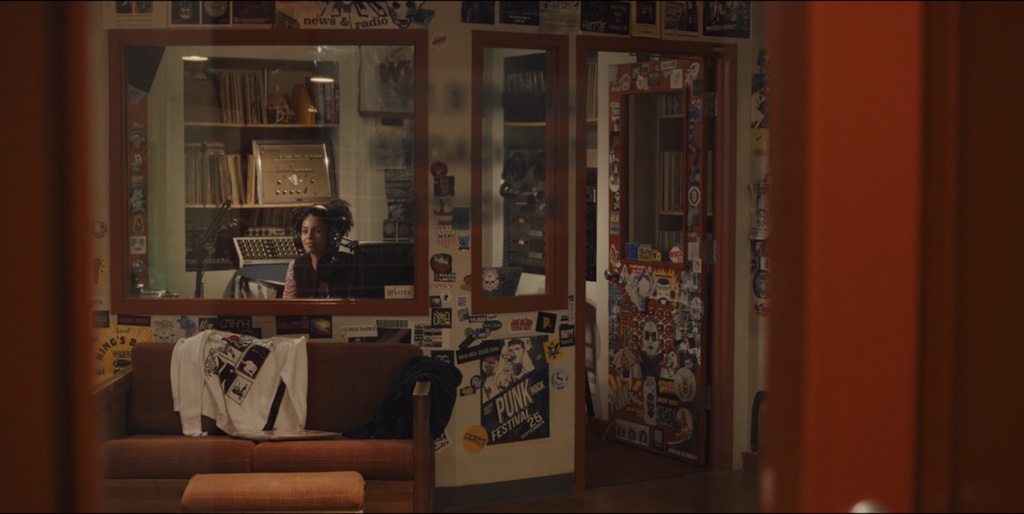
“We wanted it to be hip…like Anne and the Androgynous band. So obviously they use modern technology…with CDs and all the equipment you’d need, but we wanted it to…have a little history, just like everything in the show. So they had this pretty epic collection of music that you can see in the background in the studio, which was super fun. And I remember when we were looking at the research. A few of us [thought] it would be great to have all these albums,” Cunningham recounted. The set decorator, Sarah McMillan was able to make that happen and Cunningham recalled that “boxes and boxes and boxes of these amazing albums” appeared. The approximately 5,000 rented vinyl LPs ran the gamut from big band music to Nancy Sinatra to Van Halen.
While elements clearly drawn from the real WHRC are seen on-screen, inspiration also came from NPR’s Tiny Desk Concerts space (see my tour pix), from Cunningham’s memories of visiting the basement campus radio station WPGU when he was in college at University of Illinois at Urbana-Champaign (see my 2012 visit to the station’s newer digs), as well as college radio recollections from the show’s director Craig Zobel. Cunningham described the station as “an amalgam.”
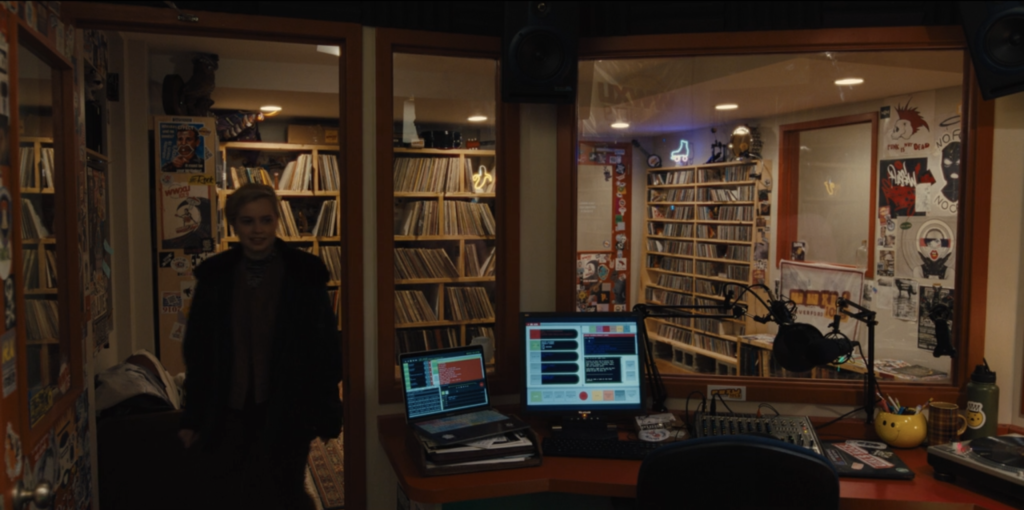
Something that I really enjoy about visiting long-time college radio stations is that they are dripping with history, from the equipment to yellowing newspaper clippings on the walls to cupboards and file cabinets full of vintage meeting notes and playlists. It’s incredible that the creators of WWXU kept that in mind as something not only integral to the radio station, but also to the ethos of the whole show. Cunningham said that they wanted to blend history and the present and so features like the vinyl library helped to achieve that. I’d noticed that the booth had a mix of old and new equipment, including a modern mixer, a computer that looked to be running an automation program, a turntable, and a reel-to-reel player in the background. Cunningham pointed out that even the CDs in the studio were placed there for a specific reason, telling me that the fictional student DJs couldn’t bear to dispose of them or digitize them. He added to the story, saying, “Maybe they were interested in the cover art.”
Couches have become one of those things that I always look for at college radio stations, as there’s always a story behind them. Often they are cast-offs and the source of much lore. The retro WWXU couch likely looks familiar to many college students of the past. Cunningham told me that this was intentional and the idea was for it to look like “dorm-issued furniture” or something that was dragged out of a “study room.” To lend further authenticity, scenic painters and dressers worked to “rough up the fabric and ding up the wood” to make the couch feel like it came from decades ago. “There’s definitely stains from food that’s been spilled over the years,” Cunningham added.
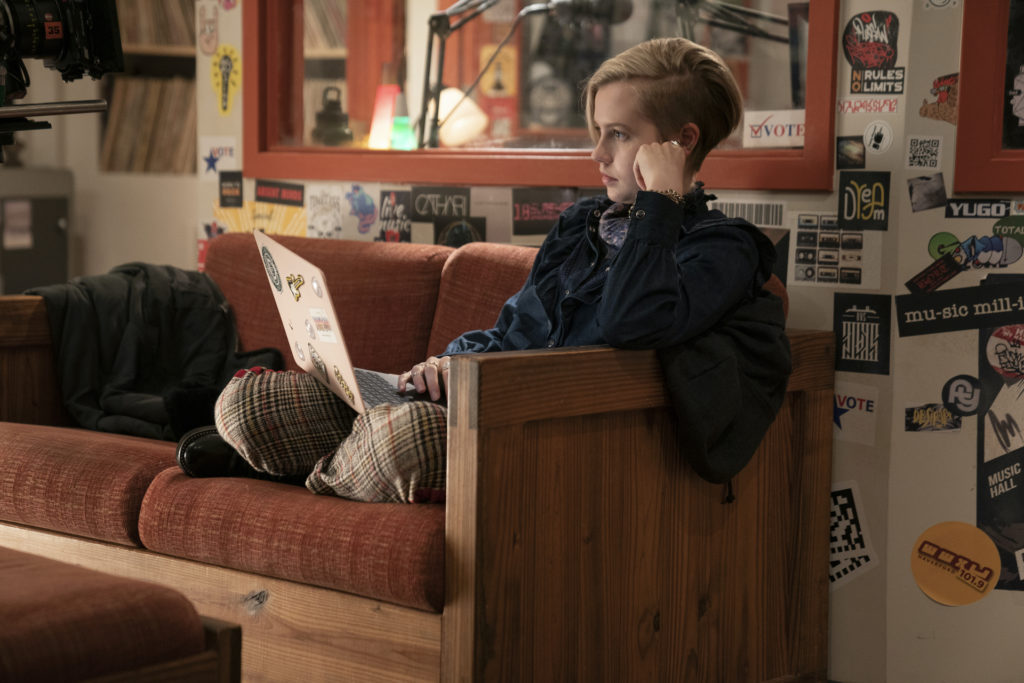
One of the more time-consuming aspects of the set design was the flyer and sticker-covered walls and windows. Cunningham shared that graphic designer Stephanie Charbonneau spent many weeks creating imagery, including the radio station logo (look closely and you can see the WWXU sticker to the right of the couch), stickers, posters, and T-shirts depicting local bands and shows that peppered the station. After all the graphics were created, the scenic department took over. “They just went to town and just layered the place with the history,” Cunningham pointed out, adding that that they even tried to imagine the station layout, piling on more and more flyers and posters in what they presumed to be the older parts of the radio space.
It delights me to imagine how much fun it was to create a college radio station from scratch and I was glad to hear that production designer Keith Cunningham felt that way as well. He noted that this particular set was nice to do, as it was the location for some of the more “uplifting” moments of the series, telling me, “Our show is pretty heavy for a lot of it” and “we never wanted the show to be just bleak on bleak on bleak.”
To compare the fictional Haverford College radio station from Mare of Easttown with the real Haverford College radio station in the 2000s, take a look at my field trip posts from 2009 and 2014. I also share photos dating back to the 1920s as well as the 1940s and beyond in various pieces that I’ve written about the history of student radio at Haverford College. An even more in-depth exploration of Haverford College radio history can be found in articles that I wrote for the Haverford Magazine and for Interactions: Studies in Communication and Culture.

